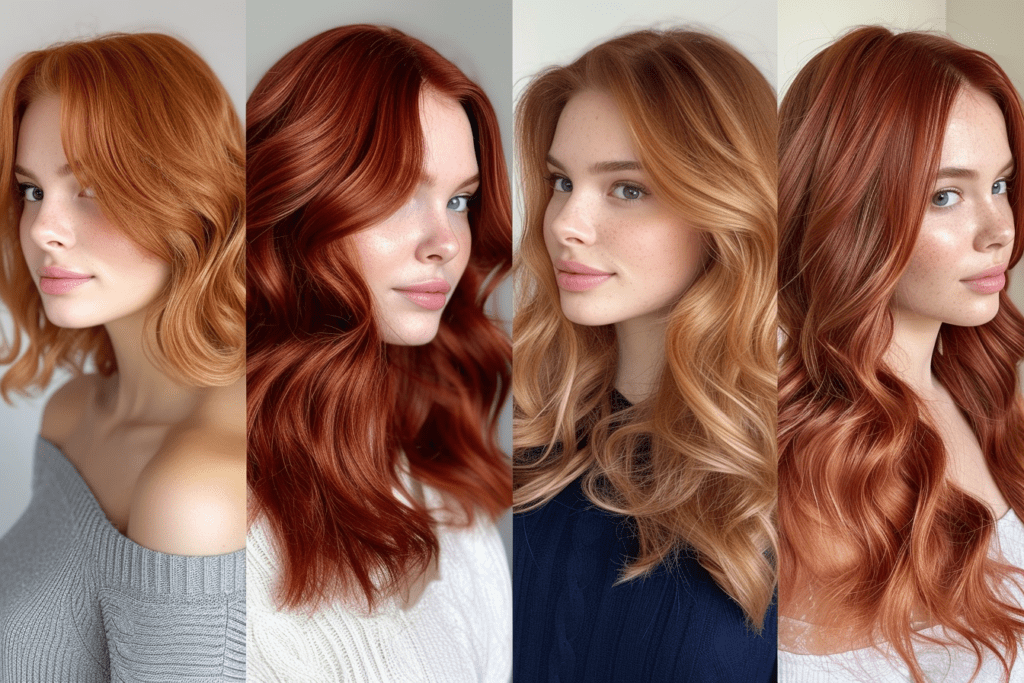Hair color is an interesting aspect of human looks and can be changed through different ways. Below are the things you need to know about hair color:
Natural Color: The melanin pigment amount and type found in hair follicles determine its color. Melanin comes in two types, namely, eumelanin that results into black and brown shades and pheomelanin that gives rise to red and yellow hues.
Genetics: Genes inherited from parents play a big role in the determination of natural hair color. Such genes can control the production and distribution of melanin within the hair shaft.
Variability: Natural hair colors differ dramatically among individuals, encompassing jet black to platinum blonde plus everything else in between. These variations may be influenced by factors like ethnicity or geographical origin.
Hair Coloring: Many times people have wanted to change their hair color for reasons like fashion trend or personal preference or just being able to cover grey hairs . This is possible through use of permanent dyes , semi-permanent dyes as well as temporary ones.
Types of Hair Dyes:
- Permanent: These penetrate the entire length of the strand thus permanently altering its natural shade until new strands grow again.
- Semi-permanent: These only penetrate partially into the strand but fade away after multiple washings.
- Temporary: This includes those which coat your entire strand hence can be washed out during one shampooing session.

Ingredients: Hair dye contains chemicals such as ammonia, hydrogen peroxide, and various coloring agents that enable it undergoes desired color transformation. It’s important to follow instructions carefully; do a patch test before dyeing so as not cause allergies on your body or damage your own skin.
Maintenance: Therefore maintaining a certain look will often require retouches with permanent/semi-permanent dyes since the growth of new strands may reveal the true nature if roots were not covered up.
Effects on Hair Health: If hair dye is misused or overused, it can cause certain damages like dryness, brittleness, and breakage. In this case you can reduce the damage by treating your hair using conditioning treatments and also limiting your exposure to heat styling tools.
Professional vs. DIY: While some people prefer to color their hair at home with products bought from the stores, others choose professional salons for better results or expert advice.
Trends and Styles: Hair colors change over time depending on what’s trending in fashion industry as well as pop culture or which celebrity endorses it. Trying out new shades or techniques is a great way to show off one’s individuality
What You Should Know Before Dyeing Your Hair?
There are a few factors you need to consider before dying your hair in order to have successful experience and keep all possible risks at bay. Here is what:
- Hair Condition: Evaluate the condition of your hair prior to discoloration process; if it has weakened (damaged), dried-up excessively or become too brittle this means that no coloring should be done. Even though there might be good reasons for you desiring healthy hair, it can always be conditioned through application of deep moisturizing treatments or simply waiting until it recovers fully prior dye application.
- Allergies and Sensitivities: Conduct an allergy test within 48 hours before applying any form of dye on your mane so as to check whether you are allergic/sensitive towards its chemicals/ingredients. How do you do this? Apply a small amount (dot) of the whole mixture onto an inconspicuous area such as behind the ears then watch for any reaction(s).
- Color Choice: Find a shade that matches both your complexion, eye color, personal style. It may seem sensible sometimes talking about someone who does not know her well but just by looking at her one could see that she had gone wrong by trying out different shades; displays personality traits inside
- Dye Type: Choose the appropriate form of hair dye according to what you would like to achieve and the state of your hair. Permanent dyes last longer but need more maintenance while semi-permanent and temporary dyes offer less commitment for temporary color changes.
- Application Method: Decide if you want to do it yourself at home or go professional in a salon. Do it yourself hair dye kits are convenient but may require skill and precision to achieve the desired outcome especially when doing complex coloring techniques. On the other hand, salon professionals have expertise in color formulation and application for more accurate results that are consistent.

- Preparation: To get rid of any product buildup or residues, wash your hair with a clarifying shampoo before dying. Before applying dye, avoid conditioning because conditioner can create a barrier that hinders even penetration of the dye.
- Protective Measures: Put on gloves, discard clothes and use towels or capes to prevent skin contact with dyestuff that might stain your skin, clothing and surrounding areas. Petrolatum jelly is applied along the hairline together with around ears so as not to cause stains on the skin.
- Follow Instructions: Carefully read instructions on how you use the hair dye including mixing ratios, application techniques as well as processing time provided with it. Not following instructions can lead to uneven coloring results, faults or irritations on human flesh.
- Aftercare: Follow aftercare recommendations after coloring your hair to maintain color vibrancy and keep it healthy. Use dyed-hair shampoos which guarantee protection from fading colors by means of heat styling in excess or too much exposure under sunlight has been avoided.
- Realistic Expectations: Note that there could be differences in final outcomes due to factors such as natural hair color, texture of your hair or quality of dye used. You should also anticipate variations in color patterns hence if unsure about process or outcome seek advice from an expert who deals with this kind work only.
Through this way, it is possible to make sound decisions and achieve the desired color result while minimizing risks and potential damage.

